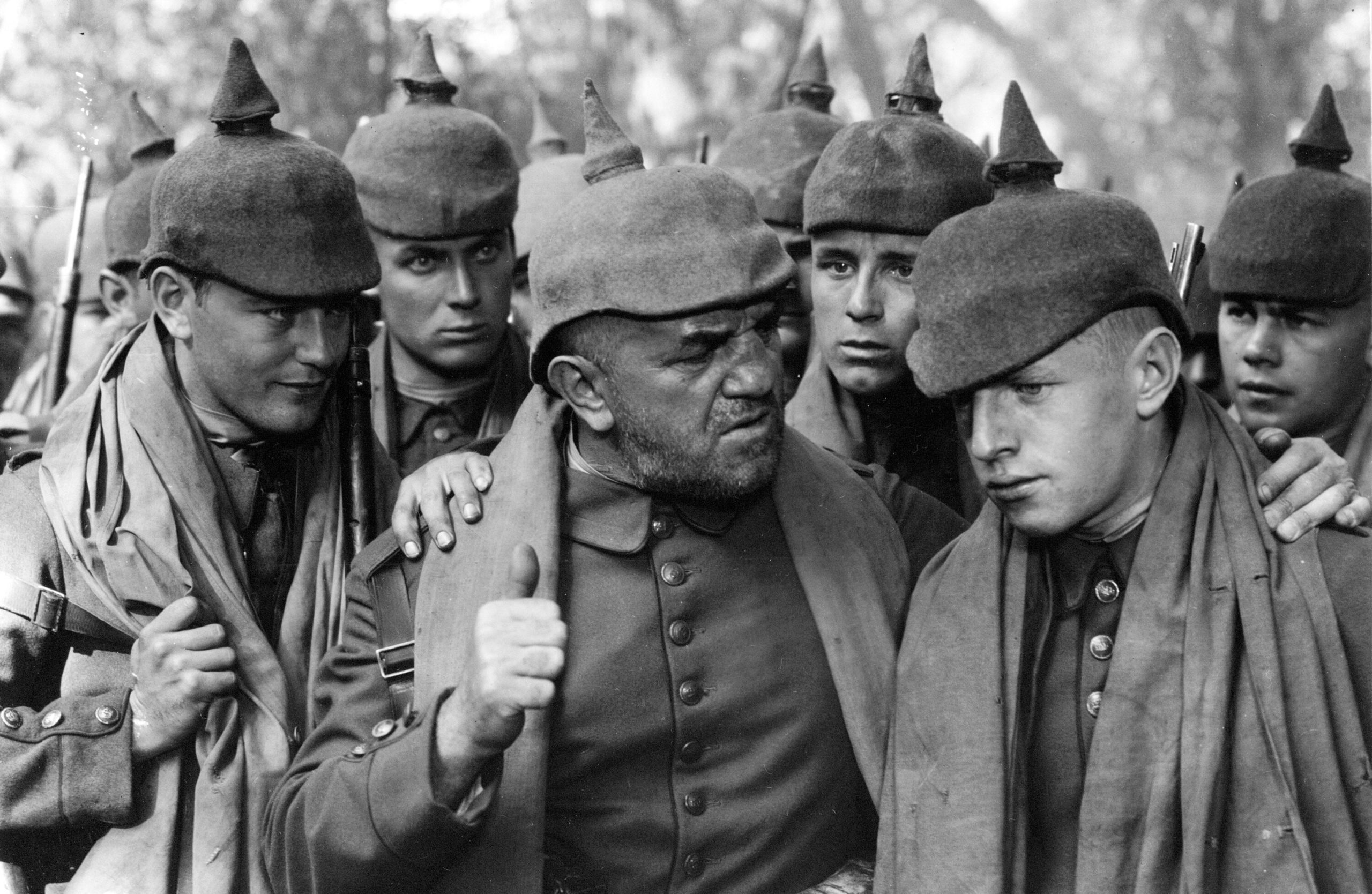Table of Contents
ToggleThe Illusion and Reality of War - A Classic Anti-War Movie
ALL QUIET ON THE WESTERN FRONT: Still Disquieting, 93 Years Later
by Victoria Thomas (@Miss_Vickums)
In 1914, English author and social commentator H.G. Wells coined the phrase “the war to end all wars,” referencing the first World War without a whiff of irony. Since then, myriad artists, songwriters, authors and filmmakers have reinforced the message that “War is hell,” and yet the story of the first World War in the form of All Quiet on the Western Front continues to fester under the skin of modern consciousness, as recently as the 2022 adaptation of the 1930 original film, based on the 1929 German novel, Im Westen nichts Neues.
And there begins the irony. The novel, written by Erich Maria Remarque, a German veteran of World War I, was banned and burned by the Nazis as “degenerate.” Three film adaptations have all received high critical praise, with the 1930 version directed by Lewis Milestone winning two Academy Awards. The 1979 television version bagged a Golden Globe and an Emmy, while the 2022 German adaptation (voiced in English with annoying British accents) won four Oscars. The persistent appeal of this story for close to a century is one of the first argument for giving the original a long-overdue second look.
After Nichols’ Catch-22, Kubrick’s Full Metal Jacket and Coppola’s Apocalypse Now, what could possibly be left to learn about the horror of war? A backward glance into the trenches of The Great War holds the answer. By the mid-point of the 20th century, warfare was informed by Space race technologies which indeed sounded like science fiction from H.G. Wells’ era. Weapons with surreal capabilities of destruction allowed troops to locate and attack targets from a great distance, with history-making efficiency. The explosive success of Oppenheimer in the summer of 2023 seals this capacity as the defining element of all times to follow. And yet in 1914, the concept of long-distance combat was new, perhaps initially exciting, and ultimately the destroyer of worlds: emerging military technology didn’t merely enable the war, but led to implosion of history and society as we had known it.
Superior weapons redefined modern warfare and ripped Western culture asunder. Tanks, the machine gun, the dirigible, fighter planes and chemical weapons (mustard gas) were used for the first time, multiplying casualties and introducing a new feeling of detachment that had been impossible with the close-range, hand-to-hand fighting methods of previous conflicts. This detachment, eloquently described in the original German by author Remarque, heralds the dawning of the alienated anti-hero that would define the arts and culture of the mid-20th century, from the Beats and Salinger through to the present day. In his 1919 poem The Second Coming, William Butler Yeats wrote:
Things fall apart; the centre cannot hold;
Mere anarchy is loosed upon the world,
The blood-dimmed tide is loosed, and everywhere
The ceremony of innocence is drowned;
The best lack all conviction, while the worst
Are full of passionate intensity.
Written a year after the Armistice which ended the war, the word “innocence” illuminates the 1930 film version written by Maxwell Anderson, George Abbott, Del Andrews, and C. Gardner Sullivan. The story begins with the indoctrination of young men, captivated by a passionate address by their professor urging them to enlist in the Army to “save the Fatherland.” In the original film as in subsequent remakes, cinematographer Arthur Edeson’s camera lingers mercilessly on the soft faces and smooth bodies of the recruits still in their teens. A character named Paul Bäumer is the story’s protagonist, embodying the naïve heroism and nationalism which is quickly snuffed out by the brutality that ensues.
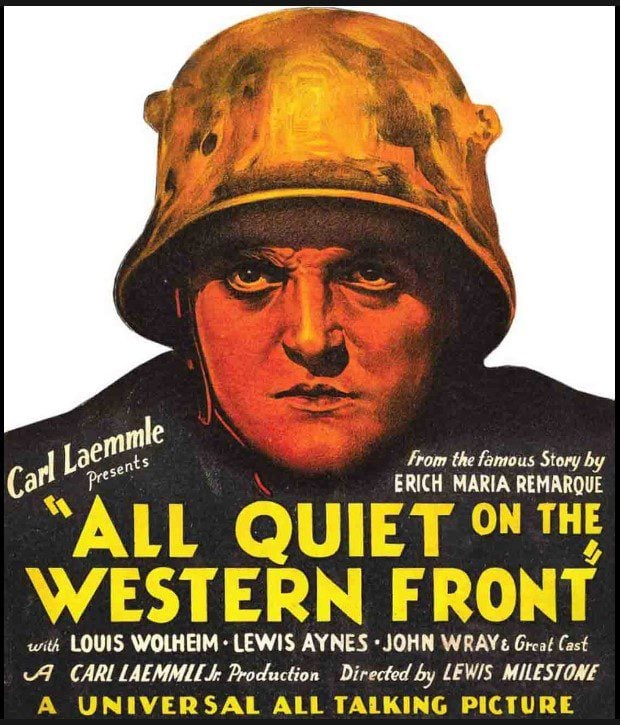
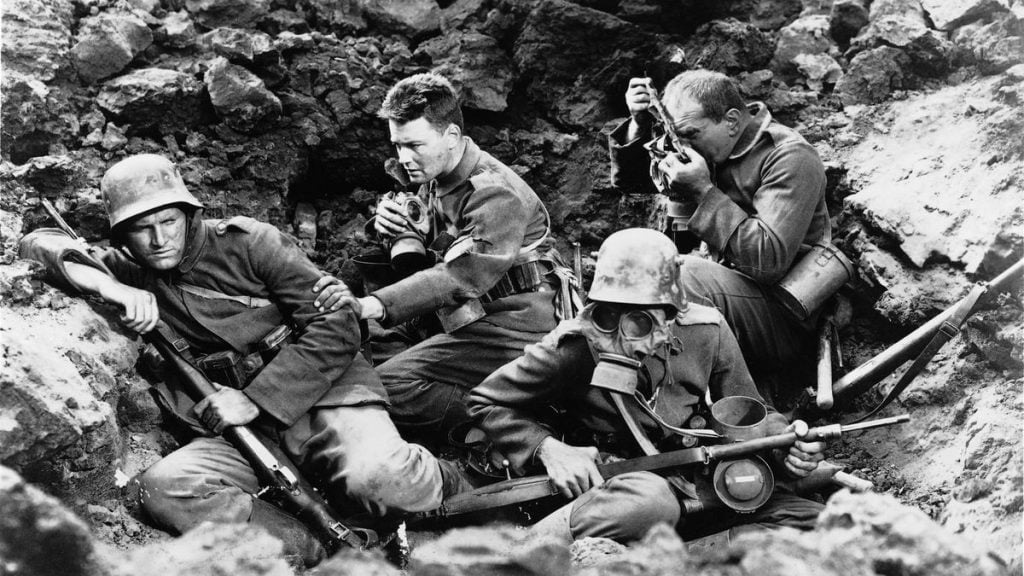
The boisterous exhilaration of joining the cause fades fast in the Carl Laemmle, Jr.-produced film starring Lew Ayres and Louis Wolheim. Basic training immediately dissipates any sheen of glamour sustained by the classmates as they prepare to become soldiers. They arrive by train directly into the chaos of the combat zone, and a man in their company is killed even before they reach their post. Their descent into the trenches is their passage into hell, where casualties soon become too numerous to count, and soon after that too numerous to even register: the men become numb, moving like machines into the line of fire, unseeing, unfeeling, unstoppable.
Sophisticated weapons, however, were not available when the film begins. In fact, the young soldiers often preferred to use a sharpened spade versus the standard-issue bayonet, complaining that the bayonet was difficult to withdraw from the body of the enemy. Also, the shorter handle of an improvised stabbing weapon made from a farm implement made it easier to use in the tight space of the trenches, when a full-frontal attack required close-range defense. Hammers, wooden clubs and brass knuckles, unchanged single Roman times or earlier, were also common in the trenches. Echoing medieval history, the Sauterelle bomb-throwing crossbow combined new technology with old, with deadly results.
The advances in weaponry which defined the war are revealed in the film to ironically play a deadly role in the excess of casualties. Although the range and rate of weapons increased, they were not mobile. Thus holding the line via trench defense became of utmost tactical importance. The strategy was to defend one’s position until the enemy literally ran out of blood. On film, the entrenched men appear like vulnerable, caged animals, or perhaps larvae, twitching in their earthy hollows, perhaps waiting for a new and more terrifying metamorphosis into a form other than human. The very subterranean nature of trench warfare lends the imagery a surreal and ghastly quality, referencing the descent into the underworld in chthonic mythological terms, and the inevitable entrance to death’s sleep in the grave. The zigzag digging pattern of the trenches, reinforced with miles of razor-wire, was effective in preventing close contact between the opposing forces. For the first time in human history, the visceral experience of face-to-face, skin-on-skin killing was abstracted. This allowed for a more efficient kill, yet eroded the sense of honor upon which military victory has always been based. The film poignantly illustrates this disintegration of belief, a global cultural implosion which would soon be felt far from the battlefield, for many generations to come.
The most significant technical innovation of All Quiet on the Western Front is Milestone’s integration of the era’s rudimentary sound technology with the advanced visual effects developed during the late silent era. Using two cameras shooting side-by-side, the director applied post-synchronization of the sound recordings, having captured all of the tracking shots with a silent camera. In one of the film’s most disturbing sequences, Milestone used tracking shots and sound effects to graphically show the effects of artillery and machine guns on advancing troops. Originally conceived as a silent film, Milestone filmed both a silent and a talkie version, shooting them together in sequence.
The film’s most defining moment comes when Paul is given a furlough and visits his family in their charming village which has remained untouched by the fighting. When Paul visits the classroom where he and the other recruits were whipped into a martial frenzy, he shares his experiences with his professor and students, who humiliate him and call him a coward. Spoiler alert: in the final moments of All Quiet on the Western Front, Paul is back on the front lines. Perhaps remembering his own lost innocence, he reaches out toward a butterfly which flits over the battlefield, and is killed by an enemy sniper.
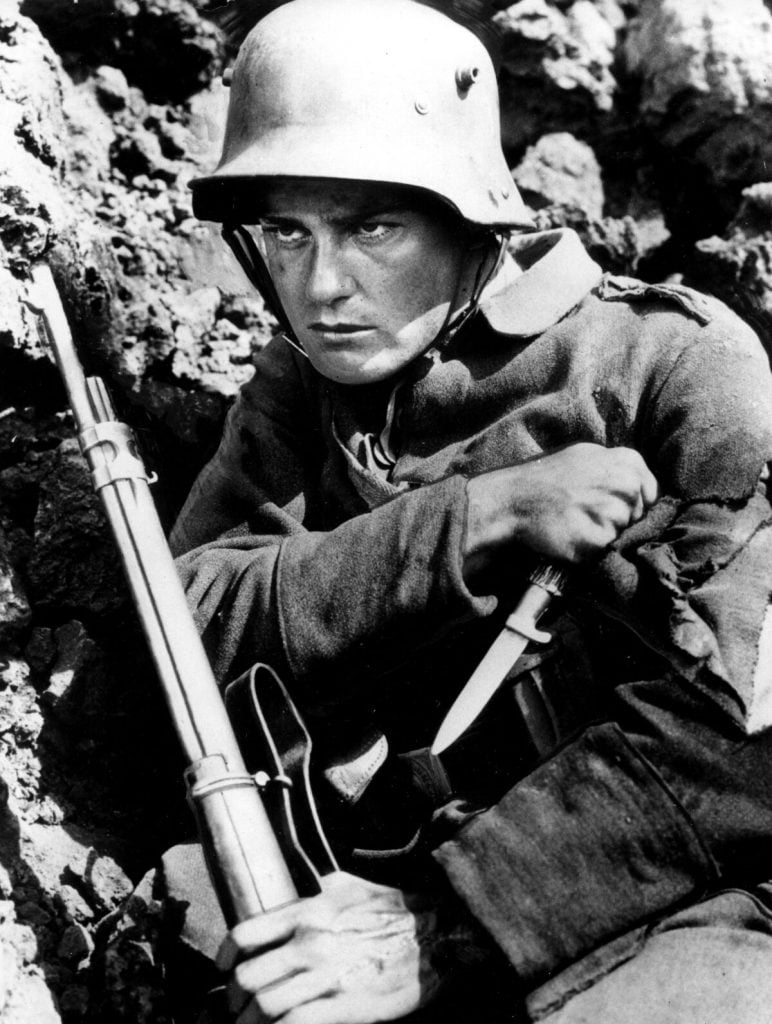
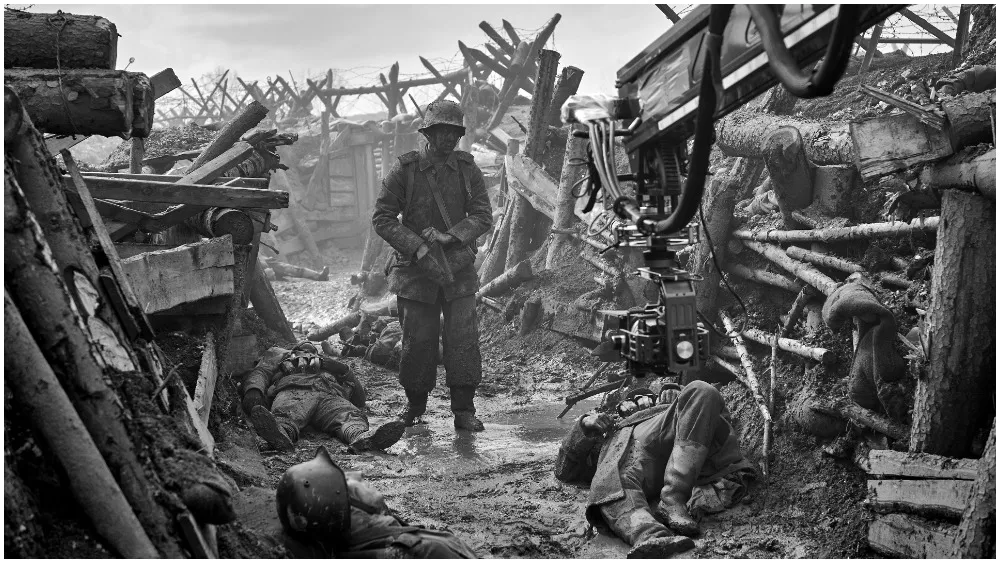
Lew Ayres in the lead role of Paul Bäumer, the idealistic lamb to the slaughter, the still-believing predecessor to Holden Caulfield and Benjamin Braddock, continues to be a revelation nearly a hundred years after his starring turn on the original film. As a direct result of his role, Ayres became a 4E conscientious objector to Word War II, further sharpening the film’s pacifist focus. His career suffered, as he was moved onto the studios’ “B” list. This, and public outcry, also caused Ayres to a make a slight edit to his decision, and he enlisted in the United States Army in 1942 as a first aid instructor, medic and chaplain’s assistant. Ayres survived enemy fire during the invasion of Leyte in the Pacific Theatre, where he provided care to soldiers and civilians in the Philippines and New Guinea, donating his modest service pay to the American Red Cross.
The film is not without its rough spots. Weirdly, comedienne ZaSu Pitts was originally cast in the role of Paul’s mother. Pitts completed the filming, but preview audiences howled with laughter at her comedic presence, forcing Milestone to re-shoot all of her scenes with Beryl Mercer in her place. The now-famous butterfly scene does not appear in the original novel, but was improvised based on establishing shots of Paul’s boyhood butterfly collection. And yet, part of the film’s verisimilitude arises from the fact that many of the film’s bit players and technical advisers were German Army veterans living in Los Angeles at the time of filming.
Modern directors continue to cite Milestone’s unflinching treatment of the material as an influence on their work, including Steven Spielberg during the making of Saving Private Ryan. On its initial release, Variety wrote:
The League of Nations could make no better investment than to buy up the master-print, reproduce it in every language, to be shown in all the nations until the word ‘war’ is taken out of the dictionaries.
It’s worth noting, all these years later, that the film like the original novel sent a shockwave through the Nazi Party when All Quiet on the Western Front reached German audiences. Interpreting the film as a Jewish (and therefore degenerate) work, Hitler’s goons stink-bombed the theatres, disrupted the viewings by scattering sneezing powder in the air, and even released mice into the crowds while screeching “Judenfilm!” True, Lewis Milestone was born Leib Milstein in what is now modern-day Moldova, to a distinguished Jewish family. When he was preparing to shoot his wrenching anti-war film All Quiet on the Western Front from the point of view of German schoolboys who become soldiers, Universal co-founder and president Carl Laemmle pleaded with him for a “happy ending.” Milestone replied, “I’ve got your happy ending. We’ll let the Germans win the war.”
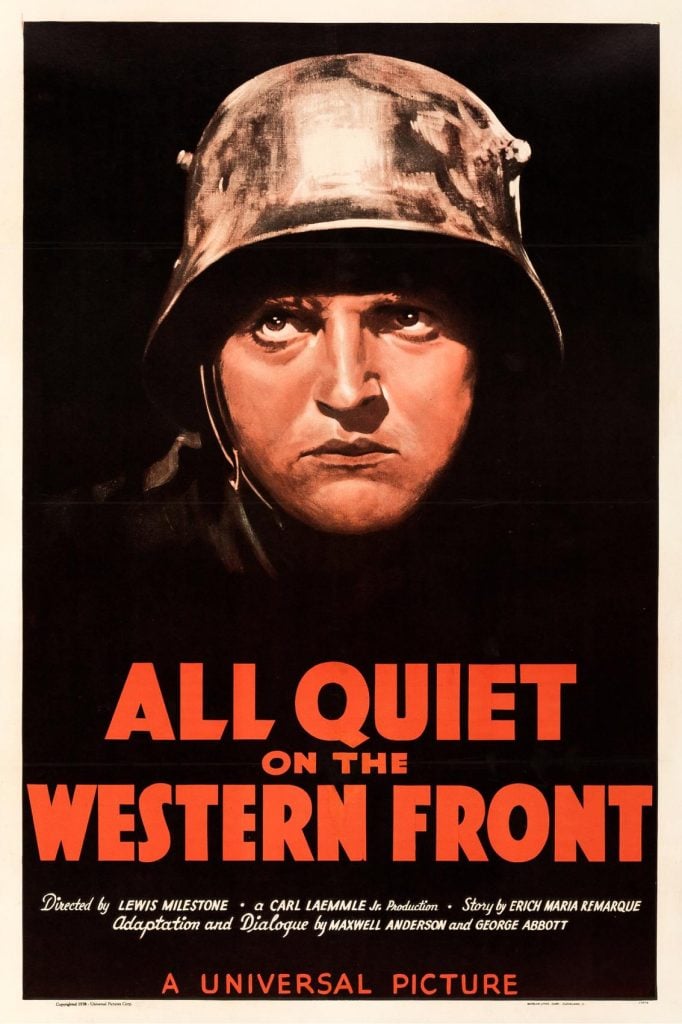
Perhaps curiously, Milestone’s anti-war reputation attracted studio interest in making anti-fascist wartime films of the 1940s. In response, Milestone threw his talents into making U.S. propaganda films, including the 1942 documentary Our Russian Front, crafted from newsreel footage, The North Star in 1943, The Purple Heart in 1944, and A Walk in the Sun in 1945. While these may seem a bit sanitized compared with All Quiet on the Western Front, Milestone’s signature tracking shots infuse the action scenes with an electrifying realism.
His Russian, and Jewish, and liberal-leftist roots of course made the director an easy target for the House of Un-American Activities Committee, and Milestone was summoned as an “unfriendly witness,” because he refused to testify. Hedda Hopper’s gossip column fanned the flames of pinko suspicion, yet Milestone’s career continued, although his brilliance was dimmed by “graylisting.” His late-career film of 1959, Pork Chop Hill, was edited by the studio to soften its anti-war sting, and perhaps diminished by the rather conventional performance of Gregory Peck as a predictably iron-jawed war hero. However, Milestone’s insistence on casting then-unknowns gives the film a rough, masculine vibrance. Among the then-unknowns: Robert Blake in his first adult role, George Peppard, Norman Fell, Gavin MacLeod, Harry Dean Stanton, and Clarence Williams III.
Milestone went on to produce bigger, fatter, fluffier, glossier films, including Oceans 11 (1960) and Mutiny on the Bounty with the incorrigible Marlon Brando, but it was clear that his creative Muse was no longer fully engaged. Milestone perhaps suffers from the curse of early success: nothing in his later catalog rises to the level of emotional force of All Quiet on the Western Front. Looking back over history, calling World War I “the war to end all wars” sounds as naïve as Paul and his classmates rushing off to wear their grown-up uniforms. And Variety’s wish that the word “war” could ever be erased from dictionaries seems nothing less than delusional. However, we will continue to seek out art like this film as we search our hearts and history to find an answer to man’s insatiable appetite to make war.
This review was written by Victoria Thomas (@Miss_Vickums), a Bronx-born pop culture writer who now lives in Los Angeles. She is the author of Hollywood’s Latin Lovers: Men Who Made the Screen Smolder (St. martin’s Press/Angel City Press) and contributes to several arts journals.

